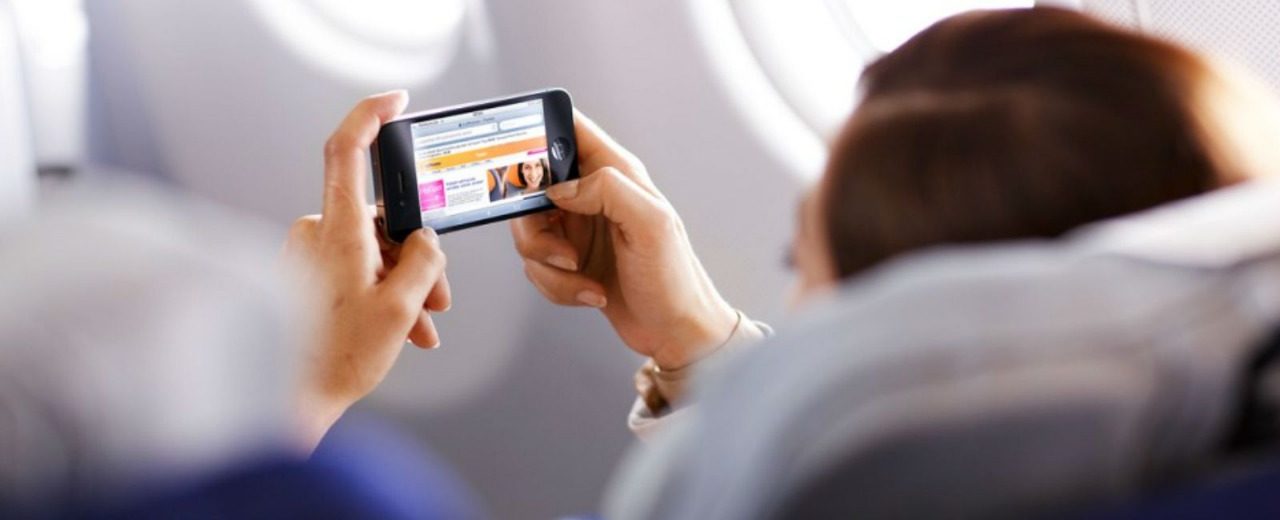In-flight Internet: How Internet Providers Keep You Connected in Sky
 executivestyle.com.au
executivestyle.com.au The internet is more than just a quirky invention from the 80s. It is a digital necessity, and these days, it’s all around us. You can find Wi-Fi in coffee shops, bars, shopping malls, and even restaurants. I know how internet providers in my area work on the ground, but what about when you’re in the air? How do airplanes manage to provide internet connectivity to passengers 35,000 feet above the ground? That too in a plane that is moving rapidly from point A to B at hundreds of miles an hour? This blog will attempt to help you understand in-flight internet.
In-Flight Internet – Broadband in the Sky
Just a decade ago, you could see airline passengers reading in-flight magazines from cover to cover. The more literary-minded ones used to bring a paperback novel for long-haul flights. Most airlines had an in-flight movie or two to help you while away the hours, but that was it. Lucky for us internet-dependent people, those days are long gone. These days, most passengers, all the way from first class to the back in the economy, have the internet. In-flight internet offers passengers the opportunity to get through the duration of their flight doing what they normally do. That is, of course, staying online, checking social media, or even streaming audio or video and everything else they do on say Spectrum internet.
Surveys show us that the most desired amenity aboard a flight is Wi-Fi. So it makes sense that many national airline carriers have decided to partner with internet providers. Many have already equipped in-flight Wi-Fi across their entire fleets of airplanes. What’s more, international and regional airline carriers also offer in-flight Wi-Fi on selected, popular routes. However, sharing bandwidth with a literal planeload of people can be a drag. It can get frustrating because it is not as reliable as the internet on land. But, that does not lessen the technological achievement behind broadband signals in a moving airplane. This blog explores:
- What is Satellite-Based Broadband?
- What is Ground-Based Broadband?
- Why is In-Flight Wi-Fi Slow?
- Why is In-Flight Wi-Fi Expensive?
Let’s jump right into the meat of the matter and discuss the above areas relating to in-flight internet.
What is Satellite-Based Broadband?
Satellite-based broadband usually only works when the plane is over water. The technology behind it is very similar to the residential HughesNet satellite internet you get at home. An antenna on the aircraft’s fuselage catches the broadband signal from an orbiting satellite in space. This signal is then beamed to the passengers to use in-flight over a router in the airplane. The antenna does need adjustment because the moving plane may pass out of range of the satellite. In this case, the antenna needs readjustment to point towards the nearest orbiting satellite.
What is Ground-Based Broadband?
Ground-based broadband works similar to satellite, but in this case, the signal comes from the ground instead of from orbit. An antenna on the bottom of the fuselage captures internet signals from ground cell towers as the plane flies over them. Once the signal reaches the antenna, it works as a hotspot using the plane’s internet router. This lets passengers connect to and use the Wi-Fi in-flight. Unlike Cox cable internet, you can’t stream content on ground-based broadband on an airplane. Ground-based broadband only offers limited MBs in speed, which has to be shared among the passengers. This brings us to the next section.
Why is In-Flight Wi-Fi Slow?
When in-flight Wi-Fi first launched commercially in 2007, it had a maximum speed of 3Mbps. Back then this was more than enough for a plane full of people. There weren’t as many internet-enabled devices back then. Today, almost everyone has at least one smartphone or smart device. On these devices, we have tons of apps that consume Wi-Fi aggressively. Today, even a 12Mbps connection doesn’t seem to be able to offer much more than the basics onboard a plane. Of course, this will eventually upgrade to more bandwidth. But the costs of such upgrades can be astronomical. This is the biggest reason why in-flight internet lags behind residential Comcast internet plans when it comes to speed. There are only limited bandwidth and a lot of consumers.
Why is In-Flight Wi-Fi Expensive?
If you look at it, in-flight Wi-Fi costs more in absolute terms than your average Frontier internet plans. In-flight internet is expensive because the cost of maintaining the service is very high. Upgrading a satellite for better signals can cost millions of dollars. Upgrading older aircraft with modern internet systems is another cost-prohibitive task. Depending on the size and type of aircraft, retrofitting can easily cost around $500,000 per aircraft. Add to this the cost of maintenance and technical personnel. Then there is the fact that antennas cause drag and cause a plane to consume more jet fuel. All of these costs ultimately come to the customers, or in this case, the passengers. In some cases, you could even have to pay as much as $50 a month for in-flight Wi-Fi (frequent fliers).
Disclaimer: To our knowledge, we have made all the required efforts towards obtaining owner/publisher approval for the use of images in VISIONECLICK.COM blog posts. However, if you find violations of any sorts regarding any image, please feel free to contact us. Prices and packages mentioned may vary with time and the specific locations.